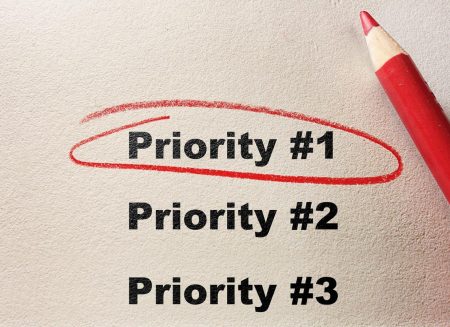The Inflation Reduction Act is keeping drug plan sponsors, pharmacies, Medicare educators and anyone who works with Medicare drug plans very busy. So far, the IRA has:
Many more changes are coming. The biggest one may be the $2,000 cap on Part D drug costs that takes effect in 2025, which has spawned a new program: the Medicare Payment Prescription Plan or MPPP. This may seem simple in concept but it’s really quite complicated. On the website for this new program, the Centers for Medicare and Medicaid Service has nine documents, including fact sheets, cost calculations, timelines, and final guidance, totaling 316 pages.
Trying to figure out what those who have Part D drug coverage, referred to as enrollees, need to know and do about the MPPP is rather mind boggling. So, here are 15 essential points you need to know.
1. Initially labeled the OOP (out-of-pocket) Smoothing Program, this is similar to an installment payment plan.
Those who reach the $2,000 Part D cap likely will face a big bill at the pharmacy. The MPPP will allow a drug plan enrollee to pay that bill in monthly installments, spread out over the year, instead of all at once.
2. Anyone who has Part D drug coverage is eligible for this program.
This can include a standalone Part D drug plan or a Medicare health plan with prescription drug coverage, such as a Medicare Advantage plan.
3. CMS has spelled out the many requirements to help plans to identify and notify eligible individuals.
These include:
- How to identify those who will qualify for the plan as of January 1, 2025
- What to do if someone qualifies during the year
- Procedures, including calculating and handling payments, dealing with pharmacies and grievances, and
- Model materials for communicating with enrollees about all aspects of the program.
4. Plans must identify enrollees likely to benefit from the MPPP before and during the plan year.
A drug plan must send the “Medicare Prescription Payment Plan Likely to Benefit Notice” to those who:
Enrollees may also receive a notification from the pharmacy when getting a prescription. The requirement to give a notice does not obligate the pharmacy to provide counseling or education about the MPPP. That is the plan’s responsibility.
5. Plans will notify those who meet the eligibility calculations.
Eligible individuals won’t have to sift through all the links on a plan’s website or the fine print in the Evidence of Coverage to determine eligibility. According to a CMS document, a plan can send the election form with the 2025 plan card or in a separate mailing.
6. Participation is voluntary.
Eligible individuals can decide whether to enroll; there will be no automatic enrollment. Choosing not to participate will have no impact on Medicare or Part D prescription drug coverage, or other programs that reduce costs for eligible individuals.
7. The MPPP applies only to Part D drugs that are listed in a plan’s formulary.
Just as with the $2,000 cap, the MPPP does not apply to Part B drugs provided as part of a physician’s service or for use with durable medical equipment and generally not self-administered.
The enrollee will be responsible for the cost of noncovered drugs and pay that when getting the prescription.
8. There will be no copayment or cost sharing when picking up medications at the pharmacy.
This includes mail order, specialty and long-term care pharmacies. Plans are responsible for paying pharmacies.
9. Once enrolled in the MPPP, enrollees will pay the drug plan on a monthly basis.
Plans will calculate a monthly amount (quite an involved calculation) and send monthly statements.
10. The amount of the monthly bill may change.
How much you pay from one month to the next can vary, such as when there’s a new prescription.
11. A plan can terminate participation in the MPPP for failure to pay the bills.
The drug plan must issue timely notifications about the missed payments, provide a grace period of at least two months, and have a reinstatement process to resume participation for good cause.
However, the plan cannot terminate enrollment in the drug plan for not paying the monthly statements.
12. Individuals can also opt out of the program.
If choosing not to continue, the enrollee will be responsible for paying the balance. The plan will provide details on how to opt out and pay up.
13. The MPPP will not save anyone any money.
This program is just a way to spread out drug costs over the year. Enrollees will pay the same overall amount they would as if they were not in the plan. This may be helpful to those on a fixed income; they’ll be able to budget the payments.
14. Not everyone will benefit from the MPPP.
Of course, anyone with very low drug costs would probably face more hassle than it‘s worth when spreading out payments. CMS has identified others, including those who:
- Receive extra help with drug costs from Medicare or some other program
- Do not want to change how they pay for their drugs, such as an every-three-month payment for mail order medications
- Qualify for the program in the last couple of months of the year (not enough months remaining to spread the costs), and
- Another reason not on the CMS list, people may simply not want to deal with monthly statements.
15. The most important fact to know about the MPPP: Everyone must pay attention.
This program is new. CMS is still finalizing some information and there are likely to be a few hiccups.
So many changes can make Medicare seem even more overwhelming. Sometimes it’s difficult to make sense of what’s happening. What can you do?
Here’s an easier approach.
- Study the 2025 version of your drug plan during the Open Enrollment Period, October 15 to December 7. Plans are adapting to the new requirements, which means there may be big changes in drug coverage and costs.
- Open and read any piece of mail from your drug or Medicare Advantage plan, Medicare, CMS, and Social Security. You will get information to help you decide what you need to do.
Read the full article here
















